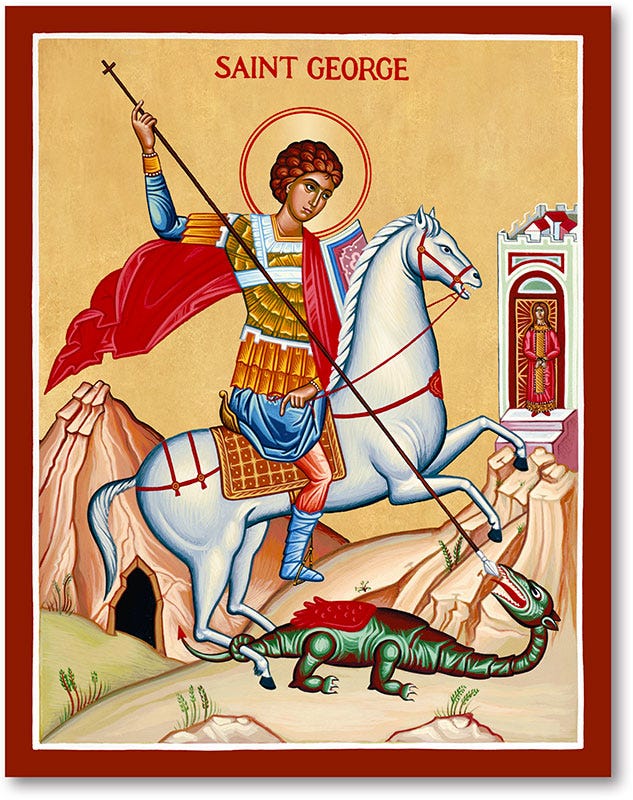Member-only story
History of St George and the Dragon

Saint George’s Day is April 23, likely the day of his martyrdom. He is often depicted as a knight in armor. He is the patron saint of England, and his day has been celebrated there from the 9th century and more recently throughout the British Commonwealth… though he was not English, and never visited England.
Origin of St George
He was born in the 3rd century in Cappadocia, modern-day Turkey, and died in Lydda, or modern-day Israel, in what would have been the ancient Roman province of Palestine in AD 303, and would have been a Roman officer.
His story was brought back from the Holy Land to western Europe during the Crusades during the Middle Ages, probably in the 12th century, and then popularized in the 13th century. The motif of the dragon was originally associated with the soldier saint, St Theodore Tiro (Theodore of Amasea) of northern Turkey. In the 11th century, the dragon depictions were transferred to St George.
The Legend of St George

The narrative of the story of St George and the Dragon predates his Christian times. You may be familiar with the Greek myths:
- Jason and Medea, where Jason fights the sleepless (hydra) dragon — made famous by the movie Jason and the Argonauts
- Perseus and Andromeda, where in the movie Clash of the Titans, Perseus faces the sea monster Cetus to rescue the princess Andromeda… though the film uses the Kraken from Norse mythology.
There are many versions of the narrative about St George and the Dragon but all contain the following similar themes:

- A town is terrorized by a dragon who requires placating, eventually including human sacrifice
- A young princess (Sabra?) is offered up to the dragon
- St George learns about this (from a hermit?) and rides to the town
- St George rescues the princess…
